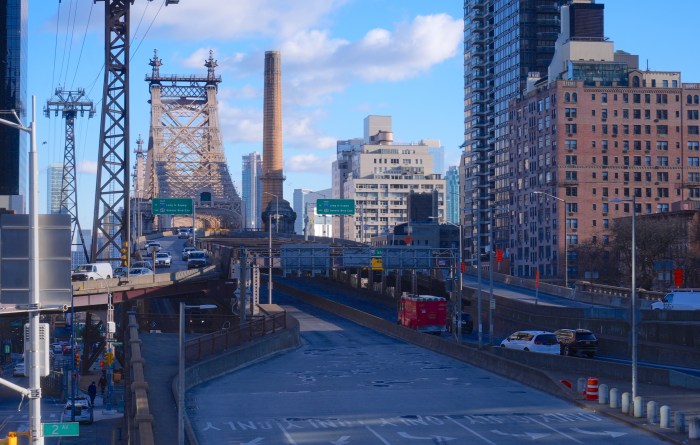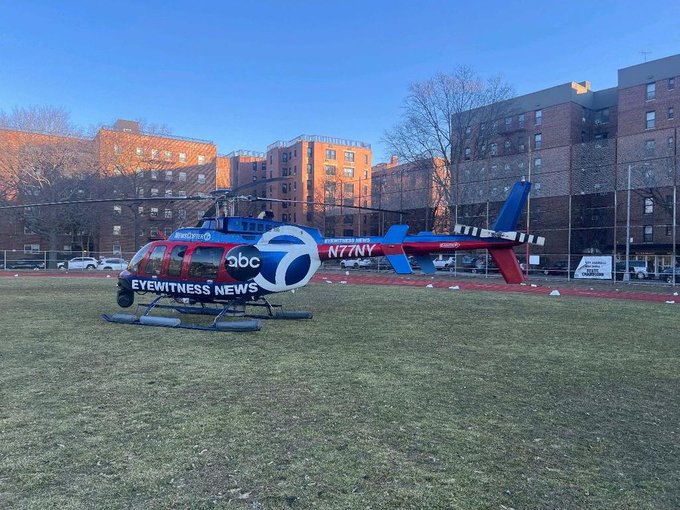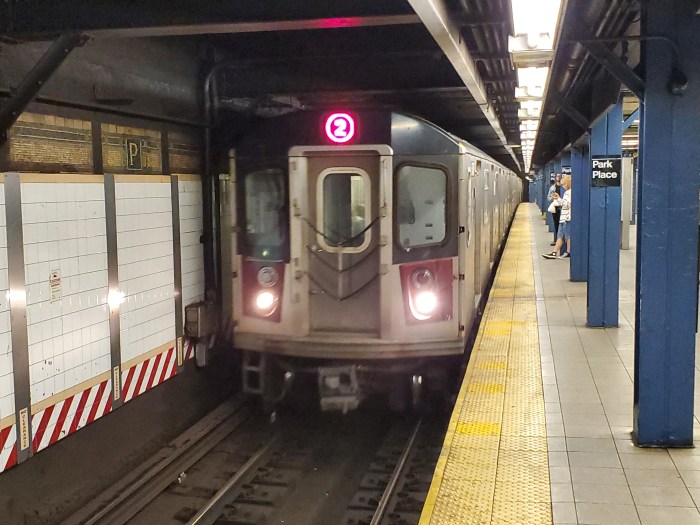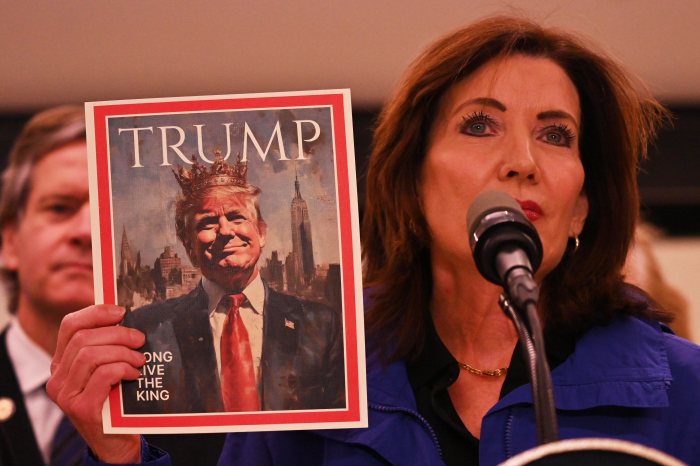
Amid a surge in cyclist fatalities and climbing traffic injuries, some believe the city is failing to grapple with a fundamental threat to street safety: more people choosing cars over mass transit to get around.
Under Mayor Bill de Blasio’s Vision Zero safety initiative, the city has pledged to eliminate all traffic-related deaths by 2024, but 2019 poses a significant challenge to an already ambitious goal.
There have been 15 cyclist fatalities so far this year compared with 10 recorded in all of last year. Overall traffic deaths are also on pace to rise this year, with 96 fatalities on city streets through June, compared with 83 at the same point last year, a 15.7 percent jump. And traffic injuries have climbed since 2014 — increasing from 51,057 injuries that year to 60,800 last year — even while deaths had declined to historic lows in 2018.
Jon Orcutt, the spokesman at Bike New York and former policy director at the city’s Department of Transportation, believes those figures are particularly worrisome to cyclists, for whom “six inches could be the difference between brushing yourself off or getting killed” in a crash.

The city, he said, has failed to adequately address the impact more vehicular traffic can have on safety. Orcutt believes there must be a more urgent push to redesign streets with features like protected bicycle lanes and added pedestrian space.
“City street redesign efforts need to increase in pace. We think they’re good and we’re very supportive of what the city does each year on the streets,” he said. “But I don’t think there’s been a recognition that the return to transportation growth led by cars has a big safety implication that needs to be matched by the city’s efforts.”
As commuters began fleeing poor bus and subway service, opting to bike or to take one of the soaring numbers of e-hail vehicles from services like Uber and Lyft to get around, weekday traffic volumes in the city have grown from 4.371 million vehicle trips in 2014 to 4.441 million vehicle trips in 2016, according to the most recent city data.
Since 2010, the city’s per capita car ownership has increased as private vehicle registrations have climbed. Meanwhile, the number of licensed vehicles under the Taxi & Limousine Commission has ballooned by almost 52 percent since 2015, fueled by the rapid growth of Uber and Lyft.
During that growth at the TLC, its drivers’ traffic injury rate worsened. TLC vehicles were involved in 6,629 crashes that caused injuries in 2015, compared with 10,600 of those crashes last year, a 59 percent increase, according to city data.

Cars have a direct role in causing cyclist collisions: getting struck by an opening car door, known simply as “getting doored,” is the leading cause of bicycle injuries, according a recent tweet from the DOT. The city did not elaborate on those figures when asked for comment.
Even though cyclists were statistically less likely to be injured in 2017 than a decade earlier, cycling injuries are also climbing this year. Riders have been rattled by the deaths in the news — three cyclists were killed in a recent seven-day window — or their own harrowing experiences. Cyclists are planning a “mass die-in” on Tuesday evening in Washington Square Park to protest the recent deaths.
“I don’t always feel safe, but I try to push the fear down,” said Sage Bartow, 30, of Greenpoint, who said she recently started biking again in January after being severely injured in a crash with a truck two-and-a-half years ago.
De Blasio’s administration has touted its work to install new bike infrastructure to accommodate and encourage more cycling. There are 1,240 miles of bike lanes across 6,000 miles of city streets. But many have lost faith in the city and its traffic enforcement’s ability to keep those lanes free of illegally stopped or parked vehicles.
“The city has been making more bike lanes, but a lot of times they’re not doing it well — they’ll cross traffic in dangerous places, there’s constantly construction or cars parked in them,” said Greg Granaghan, 30, of Williamsburg, who frequently bikes across the Williamsburg Bridge into the Lower East Side. “Then you create this dynamic where you have bike lanes but they’re not safe and people have to bike in the street.”
Following the recent string of deaths, de Blasio announced the development of a new “cyclist safety plan” and a three-week Police Department ticketing blitz, which was widely mocked for instructing police to crack down on laws they already should have been enforcing, like speeding, failure to yield and red-light-running.
“Are we saying that they weren’t enforcing the laws at [their] bare minimum before the 15 deaths? Are we saying it takes 15 people to die before we simply ask people to do their job?” asked Brooklyn Councilman Antonio Reynoso at a recent vigil for a fallen cyclist.
When asked about the increasing injuries on city streets and the growing number of TLC vehicle injuries, the de Blasio administration said that more than 120,000 TLC-licensed drivers have undergone required Vision Zero training that teaches how to share the road with cyclists and pedestrians. The TLC is also developing a new license renewal course that will include Vision Zero curriculum, according to the administration.
A DOT representative pointed to a different data point, “serious injuries,” which isolate traffic incidents that cause broken bones, severe lacerations and other harm beyond minor bruising or cuts. Those more critical injuries have dropped under de Blasio.
“DOT’s Vision Zero work is guided largely by data — making street improvements where we see the most fatalities and serious injuries,” the representative said in a statement. “We have seen not only fatalities decline over the years, but serious injuries as well going from over 3,700 in 2013 to approximately 3,000 in 2017. We continue to redouble our Vision Zero efforts to engineer safer streets and add more bike lanes to our growing network.”
Aaron Naparstek, the founder of Streetsblog and a host on the urbanist podcast “The War on Cars,” felt that education, enforcement and even new bike lanes were not enough.
“Right now dangerous drivers can operate with impunity and they know that and that needs to change. That’s the fundamental thing,” Naparstek said. “We’ve been paying a lot of attention to street design. To me street design is like giving kids bulletproof backpacks as a response to school shootings. What we need to focus on is the weapons and the people wielding the weapons: motor vehicles and habitually dangerous drivers.”
Naparstek said the city needs to better utilize parking policy to discourage driving and car ownership and to look at new ways to use data to target drivers with the worst records. The City Council’s bill package, called the Reckless Driver Accountability Act and sponsored by Brooklyn Councilman Brad Lander, would be a first step in that direction, according to Naparstek.
Under the act, car owners who receive four traffic camera violations within a year would be sent a warning notice and offered the opportunity to enroll in a Driver Accountability Course.
A driver who racks up a fifth violation in a year would be required to enroll in the course within 10 days of receiving a notice from the city. If the driver does not enroll in that time, their vehicle would be subject to impoundment. The act has lingered in the Council’s Transportation Committee since being introduced last year.
“A whole new set of solutions need to be developed,” Naparstek said. “We all need to start to orient Vision Zero more toward: how do we start to identify habitually dangerous drivers and reach out to them in a way that changes their behavior — I don’t even think this is punitive or carceral or enforcement-oriented. This is an issue of transportation management.”
With Allegra Hobbs
Citywide weekday traffic volumes
- 2014: 4.371 million vehicle trips
- 2015: 4.406 million vehicle trips
- 2016: 4.441 million vehicle trips
Taxi & Limousine Commission licensed vehicles
- 2015: 89,686
- 2018: 135,993
New York City vehicle registration
- 2014: 2.057 million
- 2015: 2.107 million
- 2016: 2.162 million
- 2017: 2.189 million
Taxi & Limousine Commission crashes involving injuries
- 2015: 6,629
- 2016: 8,099
- 2017: 9,218
- 2018: 10,600
New York City traffic deaths
- 2015: 234
- 2016: 231
- 2017: 223
- 2018: 203
New York City traffic injuries
- 2015: 53,181
- 2016: 59,432
- 2017: 59,212
- 2018: 60,800


































